Social Media Management: How to Fix Mistakes Business People Make

Can you believe it? The role of social media manager is commonplace by now, yet…
Most business people still make the same mistakes on social media.
They harm their business by risking their reputation, traffic and ultimately bottom line!
How to fix them? Here are the most common mistakes and solutions.
15+ Years of Social Media Blunders
Sometimes I think nothing has really changed since 2006!
It was when I started using the likes of del.icio.us – one of the first so-called social media sites.
Why? Just scroll down and look at what actual business people do or don’t!
Guess what? You won’t believe it’s still possible!
People made some of these mistakes 15 years ago and some learned their lessons ever since. Yet
I witness other people making these mistakes again and again every single year.
Let’s start with the help of Captain Obvious and end with the more complex albeit harder to spot issues.
This article is about organic reach and actual use of social media.
In case you are just interested in buying ads on social media, neither social media nor this article is meant for you.
Social media management is about socializing and this post explains how to do it right.
What are the actual mistakes and solutions then? Here they are!
Broadcasting

Believe it or not but broadcasting is still the most common use of social media for businesses. Business people are just using social media like the radio 100 years ago.
Broadcasting means one way top down communications from one to many.
You talk at people not with people.
Nobody is expected to talk back. It’s effectively a dead end.
It implies that thousands or millions listen instantly and at the same time and you can prepare programs up front. Social media in contrast is narrowcasting.
You have a small audience of scattered individuals, who are reading or listening at different places and times. Thus you need a personal approach, it’s more like the metaphorical social media phone.
People call you using a plethora of social media tools. You need to respond and talk with them.
Audiences want to hear your brand’s opinions, but they also want to share theirs and have a conversation on social media.
Nina Zoukelman on Oktopost.
Even in case you have thousands or tens of thousands of followers you won’t ever reach them all the same time. Social media algorithms show your updates to only a small subset of your actual audience.
Solution: narrowcasting! You have to treat social media as what it is, rather a “social media phone” or tool of one to one communication, not a radio or TV set.
Provide well crafted updates geared towards individuals who are meant to relate and respond. At least think of social media audiences as small groups of people you address at the same time. Practice narrowcasting!
In case you just want to reach millions of people and don’t care about their feedback, buy TV ads. They will talk back on social media nonetheless. So expect a backlash in the worst case.
Monologizing (100% Self-Promotion)

While broadcasting is not a good idea in general it gets even worse by monologizing and blatant self-promotion 100% of the time.
This is what most business accounts are guilty of: all their social media activity is just one never ending ad.
Instead of using your social media as an announcement monologue, change your posting approach to foster conversation and engagement instead.
Abstain from posting automatic links and avoid spamming your audience otherwise you’ll lose your followers and engagement.
Ritika Sharma on Statusbrew.
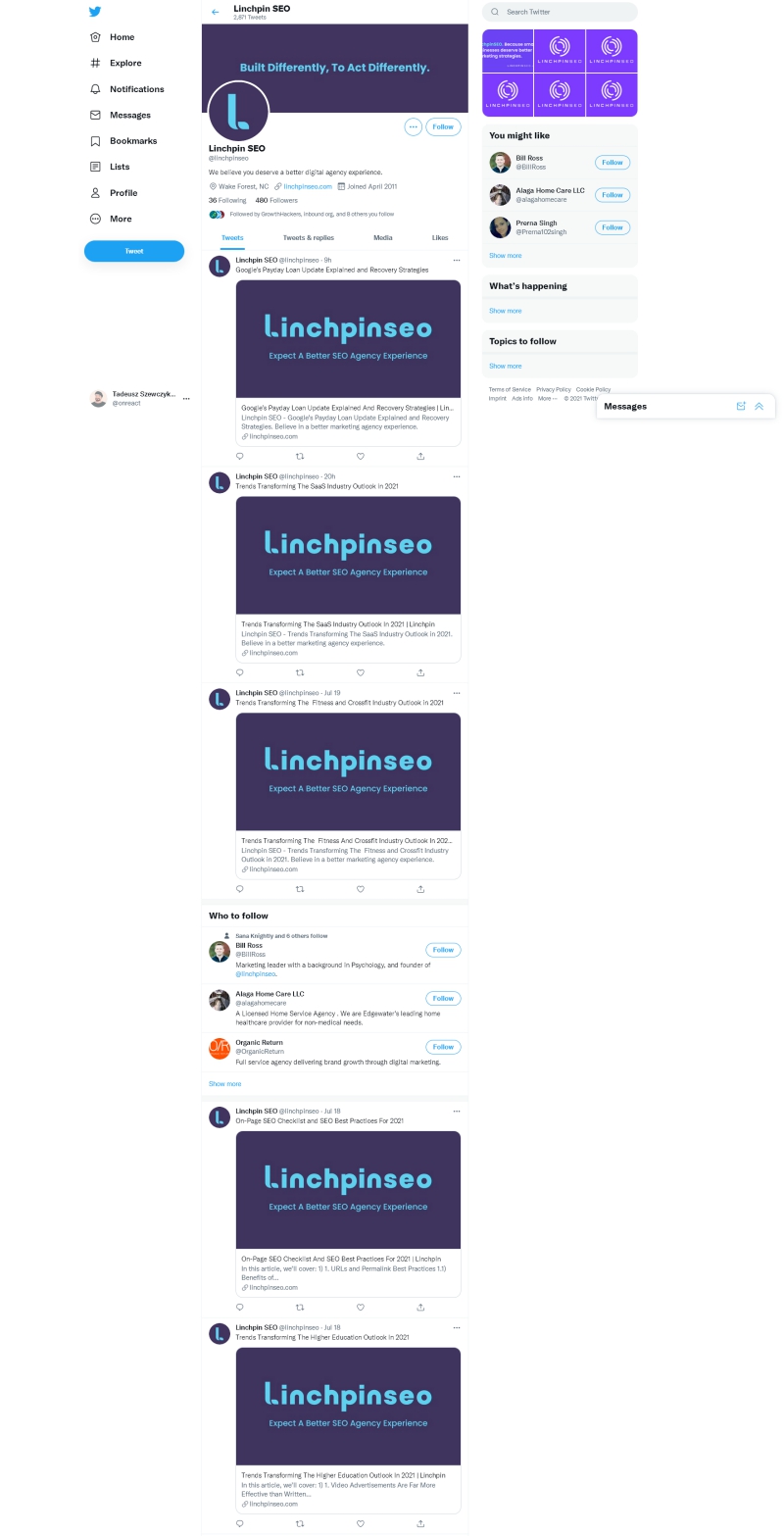
As you see in the example above such accounts do not get any significant engagement.
In fact of the top 25 updates only one had any engagement at all. This might seem like an extremely repetitive example but many business accounts are strictly self-promotional monologues like this one.
They only share their own content or talk about themselves. At best they share something other people said about them, their clients e.g.
The monologue approach assumes that social media is like a static corporate website and it deals exclusively with you.
Another assumption is that there already is an audience that reads or listens. Most such businesses have zero or barely any engagement on their profiles and streams.
Solution: Conversing as in dialogue. Always remember that social media is social and not selfish.
It’s a dialogue or conversation, hence the “join the conversation” slogans of early social media proponents.
No Audience Building

A social media channel is like a theater or cinema. You need an attentive audience first to start the show or show the movie.
When the audience is empty, showing a movie does not make sense.
Building an audience is one of the most effective marketing and ROI driving activities you can engage in. If you don’t have an audience, you have to pay to force your messaging and offers down people’s throats via advertising.
Sean Work on Judicious, Inc.
Most businesses do it the other way around. They start broadcasting to a completely empty audience.
They are monologizing and assume that the implicit “just create great content and push it all the time” social media strategy will be successful sooner or later. Sorry, you are not Apple.
You have to start building an audience from scratch for most businesses usually.
Even in case you have a small audience already they won’t share the ads you push (self-promotional copy is ultimately an ad for most people) on them.
Solution: nurturing an audience. Focus on what your preferred audience wants and give it to them, long before you ask for the favor of looking at your promotional material.
Go where your audience already is and contribute on already popular blogs or platforms where you can tap into already established audiences.
Cross-Posting
You might not even be aware of what “cross-posting” means because it’s a term from the early Web. It was frowned upon almost from day one.
When you share or even worse promote the very same content with the very same wording on all different social media platforms you will ostracize people in many cases. Why?
The posts your friends ‘like’ on one platform aren’t the exact same posts your followers or friends will share on another.
Daria Nartya on PRnews.io
It’s because sometimes the same people follow you more than once and then they get bothered with your identical messages repeatedly and often in different contexts. Let’s say you are the typical business and active on
So Instagram is used for inspirational photos showcasing cool, sexy and adventurous lifestyles. People, fashion and travel photography abound. Now here you come with your latest product. Oh bummer.
It’s like going on a hike with some beautiful people and then when everybody watches the snow-covered peak or beautiful sunset you interrupt and tell them “enjoy an x of y, it’s healthy, affordable and the shipping is free”. People will ignore you at best.
Then you see the same message on Facebook, mixed with your parents’ and friends’ messages that are more urgent, some people you knew years ago and you stay on top with plus your local or global groups you keep track of.
There are also some disconcerting news making people angry, sad or anxious. It’s just additional noise you add. You are not family, a friend or local. You repeat the same message when people are vulnerable and distressed. You are a nuisance!
Then at work, when looking up the latest industry news your update pops up again! How annoying. While looking for work you see just another update looking exactly the same.
Solution: posting individually. Ideally you add your updates manually to each network. Consider who is listening there and in what context.
Be inspirational on Instagram, friendly and casual on Facebook, newsworthy on Twitter and business-like on LinkedIn.
Always try to adapt the actual content to the audience and context you are sharing it at, or don’t share at all. For example on Twitter you can share updates daily, sometimes even a few but on LinkedIn a weekly update would be better.
Flooding
Flooding is the act of sharing as much as possible during a short time-frame. It’s usually more than one person can read.
This one should be obvious, isn’t it? Yet many businesses just assume that the more they broadcast, monologize and push their ads into the abyss of an empty audience the better.
This is even worse in the rare case when an audience has already arrived by some accident. Imagine that: showing 24h movies in a row until the last wo/man standing will finally give up and leave.
Posting regularly on your social media is a smart thing to do, but don’t make the mistake of posting too often. This can quickly annoy your audience and could push them to unfollow you.
Brooke Koster on Three Girls Media.
Flooding or publishing updates all the time incessantly may have worked in the early days of social media for some lucky early adopters.
It doesn’t anymore. People are overwhelmed with the sheer onslaught of social media content and are keen on reducing their social media consumption as fatigue and its realization dawns on larger society.
Even in case you have the most attractive content to share when you do it 24/7 or in large quantities at once no single person will be able to digest it all. Cognitive overload will happen rather sooner than later.
Solution: sharing only the best content. You have to curate your content and be very picky at what you actually share.
Mediocre or “me too” content rather backfires.
Share less but of higher quality! Also make sure to share from all kinds of sources not just your own content.
Not Engaging at All
As many businesses prefer people not to talk back they just never respond or engage in any other case. This is rather rude nowadays.
Or it shows that you can’t afford a social media manager while it’s often enough to pay for half an hour a day. Thus not responding is like never responding to incoming calls – you are effectively out of business.
“70% are more likely to use a brand’s product when the brand responds on social”
Alfred Lua on Buffer.
Monopolistic corporations like Google can get away with it because you depend on them and you are not the customer but the product.
They make money by selling your data and attention to advertisers. All other businesses can’t afford never to respond or engage at all.
Solution: socializing! What can you do then? Just track the mentions of your company, products or markets and respond whenever possible.
Especially engage when someone speaks directly to you. Yes, you can even engage when someone hasn’t talked to you first! That’s why it is called social!
Start socializing. In case people talk about you, great! Respond. When they do not yet know you, start the conversation yourself or join an existing one by responding to people who ask questions you can help with e.g.
Not Responding to Feedback
Some companies engage in general but only when you praise them or spread their message. Whenever the message does not align 100% with their goals you get ghosted.
Many customers voice their concerns on social media but businesses respond like some teenager who gets offended because you tarnished her or his sense of self.
Businesses can’t get angry officially and thus they sulk. They don’t respond at all. That’s a big mistake.
The last thing you want a disgruntled customer to feel is that you’re ignoring their complaint or concern.
Geoffrey Scott at GoDaddy.
Always remember that any feedback is useful! Customers who are giving feedback – even so-called “negative” one are actually helping you fix your problems!
Solution: responding to feedback! So whenever you get feedback, be thankful and say so, my standard response is “Thank you for the feedback!” and then you can add something actually helpful.
Otherwise everybody will assume you ignore consumer complaints or your products and services are actually broken. When someone says you have issues and offers some specific examples, take care of it!
Only ignore trolls – that is habitual malcontents just trying to get attention and exposure from attacking others. Make sure to be 100% sure someone it is a troll though. Just because a person is more often critical than not doesn’t mean s/he’s your enemy!
Mansplaining

Some businesses actually do engage but from their standpoint you are an enemy and/or idiot by default so whenever you tell them about an issue the first reaction is: it must be your fault!
The first and only solution is to explain how to use their product or service properly to you hapless newbie.
In the past I just thought it’s my fault but now that I have more than 20 years of experience on the Web I realized there is a pattern.
The assumption seems to be that social media management is a way to defend the business from all those pesky attacks that would otherwise damage the image of the brand.
Well, there certainly are such online reputation management issues but it’s not the standard situation in my opinion.
Many actual issues are probably solvable by directly addressing them instead of teaching or rather mansplaining as that condescending way of “solving problems” is often used by men towards women. The men assume they are somehow more knowledgeable and thus superior by birthright.
The same seems to be the case with some business representatives dealing with “outsiders” having problems with their offering. They are by definition smarter and instead of acknowledging and fixing the problem have to explain or rather mansplain it away. This is really ostracizing.
When I’m having issues with your products or services it’s not because I’m too stupid to use them.
Try the opposite approach which is not to assume that you are a bigger expert than your actual users, followers or visitors. Or at least check whether you are talking to a beginner or expert before responding in such a way.
Solution: empathizing! Instead of trying to be smarter than your users just be empathetic and assume there must be some kind of issue.
Even in case the user was “too stupid” to use something “correctly” the product or service seems to be not self-explanatory by design and you can improve it based on the user feedback.
Focusing on Complaints
It’s not just that poor social media management is focusing on being defensive in cases where there is a perceived “attack”. It gets even worse. Even some major brands (I have even worked for one) only use their social media accounts to deal with complaints.
They don’t curate content, engage with normal people or other businesses or even spread the word about their offerings. No, they just respond to complaints on social media.
Guess what? The impression of viewing their social media streams is this: it’s full of complaints! Thank you Captain Obvious!
Yet, such brands do not see such a “social media strategy” as a problem. They can’t “afford” social media management or they finally add some automated sharing scheduled weeks in advance.
What happens here is that you merely amplify the complaints while you ignore everything else. This is really shooting yourself in the foot.
Solution: sharing! Share all kinds of things, create, converse, curate! The complaints will be far and in-between then. Also encourage satisfied customers to voice their appreciation on social media.
Make sure that those who do actually get noticed and amplified. There are many tools that let you find out whenever your name or keywords get mentioned.
Not Rewarding Brand-Evangelists
The flip-side of the “focusing on complaints” mistake is that most businesses do not even notice let alone reward brand evangelists who praise them.
“When everything is fine just ignore it and take it for granted” is the assumption here apparently.
This is probably the number one rule of successful social media audience and community building: find out who talks favorably about you, respond, be grateful (as in saying “thank you”) and then follow that person and add them to an engagers or supporters list.
Solution: noticing and acknowledging brand-evangelists. How do you reward brand-evangelists? It’s simple. Give them the attention they deserve.
Share the inside-scoop with them before it goes fully public. Also you can send them products early for testing in case you have a budget for that.
Not Reaching Out Pro-Actively
When socializing you usually don’t wait until the rest of the world approaches you. You are polite and start a conversation yourself or join an existing one unless you’re a die hard introvert or sociopath.
Yet most business social media accounts wait until someone approaches them and never actively add something to existing conversations or reach out to users without an actual direct purpose like selling them something.
Outreach does not mean sending anonymous mass mailings to hundreds of “prospects”. You can reach out to actual people and talk like an actual person (no marketese or corporate speak).
Reaching out on social media is much more acceptable than cold emailing or cold calling.
Indeed you should connect with people on social media first before you actually write a message or even call.
Solution: engaging by default. Engage with people who are inspiring, supportive, engaging or already active in your niche. Reach out to people before you actually want something from them. Be polite, be social!
Do not just passively wait until something happens or someone starts to engage with you. Business accounts are even less likely to experience engagement by itself so that you have to be even more forthcoming.
Publishing Anonymously

Do you trust anonymous sources? In the past only criminals would send anonymous letters when they kidnapped people and wanted ransom.
On social media most businesses insist on publishing anonymously. Sure, they show their logo and business name but you never know who speaks on their behalf.
Do you follow and talk to the same person or is there a whole team? You can’t know without a name and thus assume the person behind the logo is a stranger.
“Don’t talk to strangers!” That was the mantra mothers taught us for centuries or rather millennia. We still don’t trust anonymous sources or strangers.
At one company my boss insisted on using Twitter etc. himself but without adding his name to his tweets and also not even capitalizing or using proper punctuation.
Well, he was the boss, and adding sloppy anonymous tweets was OK therefore. Other colleagues would then complain to me about those tweets.
Solution: adding names to updates. At least add a first name or some initials to your updates and message so that the person following your account knows who’s talking and can differentiate between different employees or freelancers.
Nobody befriends companies, businesses or brands. When your name is Apple you will have fans but even their personalities like Steve Jobs were key in establishing it.
Thus make sure to always tell people who speak on the business account. When the CEO her or himself is talking, that’s even better!
Preaching to the Converted
One of the common issues with businesses or organizations is that they preach to the converted, that is say things their audience already knows. This is to some extent useful in getting engagement but boring and repetitive.
In case of depressing topics like climate change preaching to the converted can even lead to anxiety and inactivity.
What happens when you’re afraid? You either run or freeze. There is nowhere to run from climate change thus people freeze, don’t move and don’t act.
Yet many “green” social accounts still share doom and gloom “news” every other day to “prove” that “climate change is real”.
When you scare people they won’t buy your environmentally carbon-neutral product or service. They will just sit still and do no nothing or worse they will get a climate anxiety attack and unfollow you.
When it comes to other topics followers might assume that you only talk to beginners and thus unfollow you out of boredom.
Solution: posting actionable advice instead. Check who your audience is and assume there is a certain amount of knowledge you can rely on. Don’t treat experts like newbies. Share calls to action to those who already already in the “middle of the funnel” and not completely new to the subject.
Chasing the Next Big Thing
So you have a blog and you’re on Twitter or Facebook but Instagram is the be all and has “a billion” of users?
Why not just divert your valuable resources internally and create high quality content for Instagram instead?
You and your “boring business” can always compete for attention with sexy bodies, celebrities and insane stunts! Guess who wins on Instagram?
Selling hosting? No problem! Drop the blog altogether and invest even more time and effort into creating graphics that might get some likes on Insta. Just kidding! Sorry for the irony. It really happened!
You won’t get any traffic because you can’t link out but who cares! You are on the next big thing!
The same thing applies to Snapchat or TikTok where you try to fake being young and hip and by young and hip I mean a teen and ridiculous.
Solution: applying content strategy. It’s good to be aware of the latest social media trends. No doubt.
Giving up your own projects (like a blog or community) for the latest hype of third party site? That’s questionable.
Ensure there is someone actually taking care of the content strategy and you just don’t jump on the latest hype based on hearsay.
Spreading Yourself Too Thin
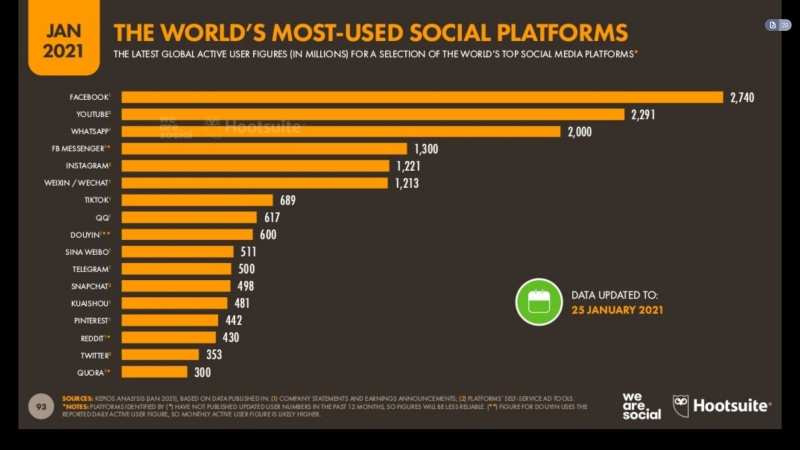
So you are a few years online? I hope your business does not just start out right now. Also I assume you have witnessed a few short-lived trends already. They come and go!
Do you remember the Quora or Foursquare hypes? You had to be there! Then… not so much.
Quora outmatched Yahoo Answers but never really worked when it comes to traffic. It was lots of work to create content just for them but they would just delete “self-promotional” links or merge content with that of your competition.
Foursquare features have been integrated into Facebook and thus the next big thing social network became redundant.
It could have been worse. Google+ died off completely and all your content curation and audience building there was wasted. I’ve been there, done that!
While Snapchat and TikTok are big now indeed (full disclosure: I ignored a TikTok job offer for ethical reasons), good old Pinterest is still as big and has both the audience and the features to make people visit your site or actually buy what you offer!
You can’t be on all of those sites and apps all the time though unless you have a huge team and a well oiled content creation machine for each specific audience. Yes, Snapchat and TikTok are different from Facebook or YouTube!
Make sure not to spread yourself too thin. Evaluate social media opportunities instead of following hypes. Does the additional effort really result in more traffic, branding or conversions and sales?
You can’t be actively 24/7 on a dozen social media sites without an enormous budget and even then it’s questionable that it will work. Find out where your audience is and go there.
Solution: prioritizing. Find three or at most four networks that work for you. For me it’s Pinterest, LinkedIn and Twitter. Never neglect your own website and blog just because a third party site seems to be cooler.
Removing Comments from Blogs
Yes, blogs are part of social media. Why? It’s because they have social features like comments or pingbacks. Yet many “blogs” by now don’t have either of them. Technically they are not blogs anymore.
So-called blogs without comments are just public journals as long as the latest on top rule is maintained.
Otherwise they are simply static websites like any other. When you use WordPress or similar blogging software and strip it of all it’s social features your blog ceases to be a blog. It’s that simple.
Why is disabling comments a problem? You outsource the conversation to third parties. The conversation is the most valuable part of social media. Otherwise your medium is not social anymore.
You have additional work because you have to monitor third party social media sites for the comments that otherwise might have appeared on your blog and respond there.
Of course you don’t have any control of what people say on third party sites so that you will see more angry and troll comments there.
Sure, even with comments enabled on your blog you will have negative comments on social media but you will probably also have a more civil conversation on your blog comment section.
Also valuable conversations will be lost quickly buried in the archives nobody ever visits.
There are many tools that effectively curb comment spam by now so that’s not a good excuse to disable comments anymore.
Solution: enabling comments by default. Enable comments on your blog (or just don’t disable them as they are enabled out of the box) and be a conversation starter. Ask visitors for feedback and reward contributions by adding them to actual posts and crediting the commenting individuals or companies.
Wasting Most Resources on Instagram
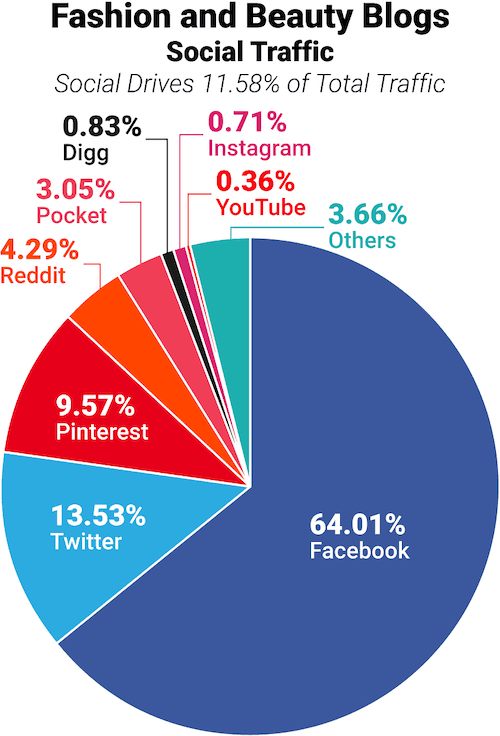
Some time around the Delete Facebook campaign apex Instagram became the next big thing for the mainstream. People oblivious that Instagram is also owned by Mark Zuckerberg of Facebook fled one for the other – even Elon Musk did so.
Insta-fame became proverbial and teens wanted to become influencers when they grow up or rather while at it. By now we know that the shiny world of Instagram is too good to be true and that it does not send any significant traffic to publishers yet the hype made the majority go there and stay there no matter how bad the odds.
Brands abandon their blogs to focus instead on creating high quality photo and video content for Mark Zuckerberg.
Sounds like a deja-vu! Why? Some did focus on Facebook prior to that – Zuckerberg’s first successful site. On FB you could at least just share content from elsewhere and get people to visit your site.
In the “link in bio” era all you can do is hope for engagement on Instagram itself. Traffic is not a meaningful metric anymore – just like with YouTube.
What can I say? The Instagram hype is over. It’s still huge but it’s mostly useless unless you can monetize brand mentions and influencers and hope that people will finally Google you and buy your products. Instagram is similar to TV.
You can only benefit from it indirectly. Who can? Brands like Red Bull can but not the average business which name will be forgotten quickly. Such “boring” businesses need traffic to their sites and user actions there.
So Instagram is great for brand recognition, engagement and other vanity metrics but hardly affects traffic and sales. Use your well-crafted content on your blog and website first and foremost and only then reuse it on Instagram in case you have a popular account.
Don’t try to build an audience from scratch on Instagram unless you have a huge budget and someone who can work on it 7 days a week like popular influencers do. There are better social media sites for traffic and sales. Guess which ones!
Solution: using Instagram as an addition and working together with influencers. Instagram can be helpful when influencers share your content or spread the word about you and your brand.
It’s helpful to have an account that is not completely empty. Creating special formats and investing lots of effort just for the site does not yield any measurable ROI in most cases.
Ignoring Pinterest
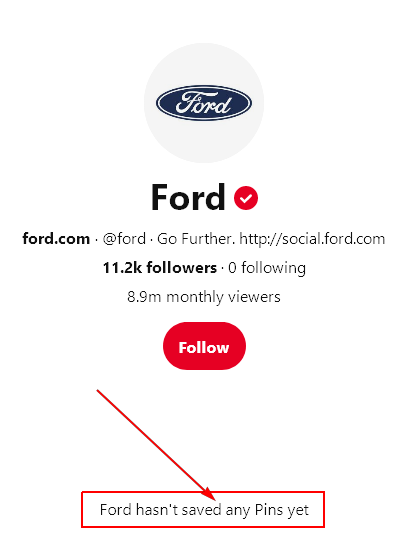
This one is still an enigma to me. Pinterest is the second biggest social media traffic source after Facebook for many years. It’s also the only social site that people use for actual shopping inspiration. Yet many businesses are still either oblivious or even ignorant when it comes to Pinterest.
Whenever a client approaches me I always pitch them Pinterest services because I use that site successfully for traffic generation for almost a decade, or rather I get the traffic even when I don’t use it. Plus I use it for daily inspiration.
Every single time I get some weird responses. Last time I suggested Pinterest I even got an angry response while the same person was wasting money on LinkedIn ads that did not get any results.
Don’t get me wrong, LinkedIn is fantastic when it comes to business-related networking yet it’s not a site you can easily sell something on. People are literally working on it instead and not in a buying mood.
Other businesses – even major brands – only throw large budgets at Pinterest ads without even sharing anything on the site to get actual organic reach there.
My ad-blockers hide all blinking Pinterest ads anyway and as I’m not the only person who dislikes being distracted I guess you only get traction among the low level users who can’t even install a browser extension.
So unlike Instagram, Pinterest is not very hard. You can share a few pins per day in minutes and those you share do not even have to be yours. It’s actually advisable that you share attractive images in general and only stick to the golden ratio of one in four shares being self-promotional.
Solution: providing mobile-friendly images for Pinterest and beyond. Just use your regular photos but make them mobile-friendly by using a vertical format. No rocket-science here unless you want to step up the game with some advanced techniques I use.
Neglecting Feeds and other Blog Features
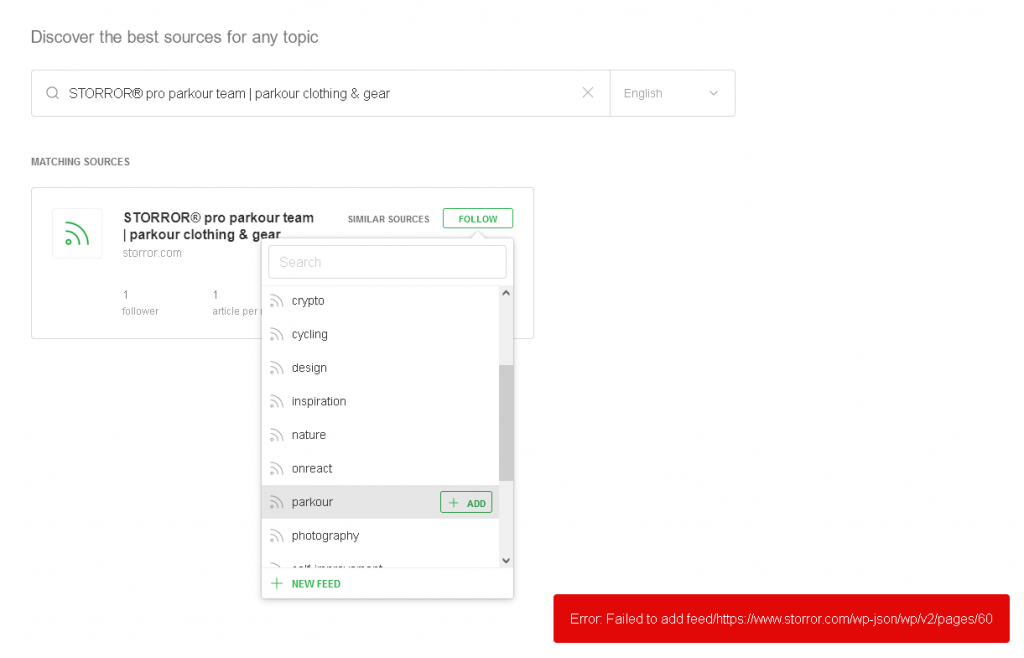
What is a blog? A blog is an online journal that gets updated regularly and shows the latest posts on top. It fosters conversation and interaction by allowing track or pingbacks and comments. See the chapter on comments above.
Last but not least it offers a feed that allows you to subscribe to the content easily with tools like Feedly.
Modern “blogs” often do not offer any of these features. They sometimes do not even have a proper feed or it’s broken.
I sometimes try to add a blog to my Feedly feeds just to realize that it does not work or isn’t even there. Why? WordPress offers feeds out of the box. So you either break them accidentally or on purpose. This is pure self-sabotage.
Just leave your WordPress CMS alone and do not break the major blog features including the feed. Then test your feed with Feedly, Old Reader and other feed readers.
Sure, feed readers are not really mainstream these days but power users who really matter and share your work rely on Feedly and the likes! So make sure to reach those hyperactive Web-savvy users who are often bloggers themselves.
Solution: testing. Test your blog feeds on Feedly. Search for your feed and subscribe to it. Does it look properly? Do you see the images on top you’d expect (spoiler alert: YouTube thumbnails will show on top when you embed videos) and so on.
When influencers overlook your posts you can’t expect the rest of the Web to join in or make lurkers visit you.
Test whether your comments work, test whether sharing to social media works and whether you have social media meta tags in use so that you see large preview images and headlines on Twitter and Facebook.
Using Low Quality Images
Believe it or not but the internet is a highly visual medium! Yes, actual text drives traffic and conversions by way of search but on social media people crave visuals, cute animals and young healthy bodies.
Even in boring industries poorly saved JPGs with blurry text in them and embarrassing artifacts make your whole content appear sloppy and unattractive. I have to force myself to keep on reading.
Also think about saving screenshots as PNG files and JPG files in 80% quality or above. Since 2021 WordPress also supports the superior WebP image format out of the box. I still had to install a plug-in to use it a while earlier.
In total, around 95% of Internet users use a browser that supports WebP.
Salman Ravoof on Kinsta.
Mere mortals do not even bother? It looks ugly for whatever reason? They bounce even if they clicked by accident.
When it comes to colorful and complex photos the difference in quality and file size between JPG and WebP can be enormous. I had JPG files that were 300kb and full of artifacts change to 100kb and crisp quality using WebP.
Solution: sharing only the best images. Only share your most valuable and enticing images on social media. Professional photos, minimalist illustrations or high density infographics are your best bet!
As an individual blogger you may have problems to get high quality photos for your post but sites like Unsplash help by offering well-curated photography.
Just make sure not to use the very same images everybody else does. Sometimes a Search by Image helps to find out whether a particular photo is overused.
Still Hailing Dead Sites
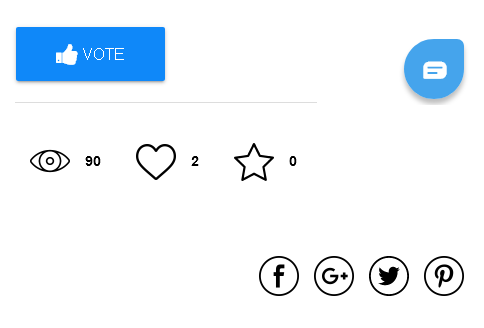
I mentioned Google+ above already but sadly I have to do it again. It’s dead and the links lead to nowhere for years but I still see websites and blogs sending me away to it almost daily.
When I see a defunct site logo on your site I know that your site has not been updated for years or if it has you are neglecting it to such an extent that you ignore social networks that do not even exist anymore.
Solution: removing defunct social sites ASAP. My advice is simple: whenever you hear about a social network that disappears and you know that you were recommending or linking it, search your blog and website for all mentions and remove them ASAP! I did so when Google killed its last social network.
Also make sure to remove icons and buttons leading to dead social site! Take care of all of them, even in case they are part of third party tools!
It’s not just Google+ of course. Many sites have come and gone over the years ever since I’ve been active on social media. This is just the most glaring example of negligence.
Instead add a better site, for me LinkedIn or in the best case a “copy link” button allowing to grab a link back to your site plus an email sharing button.
Having Different Names
One of the worst things I very often see on social media is having different names on different networks or sites.
I’m onreact everywhere because I made that name up more than 20 years ago. Sure, nowadays it’s more difficult to secure the same name all over the place but there are many elegant workarounds.
I have seen things like
- sentences: @wearehandle or @iamhandle
- trust signs: @handleoofficial
- domains: @handledotcom
- calls to action: @gethandle or @usehandle
- keywords: @handleagency or @hotelhandle
- localizations: @handlenyc or @germanhandle
These are just the common ones. You can come up with your own ideas. Just make sure the name is the same on all networks!
Solution: unifying your handles across different sites. Also do it with your descriptions, avatars and mottos unless the audiences are so different that you have to customize them fore each site.
You can often rename yourself later in case you have failed to secure the names until now. On Twitter e.g. it works seamlessly. I’ve done it for myself. You even get an automated redirect.
Ghosting the “Competition”

People who come on the Web still mostly think in real world categories, especially when it comes to business. They assume that their competition is business people very similar to them, usually offering the same type of products in the same area or country.
This is not completely false but the Web does not work like that. Your main competition for attention online are huge behemoth corporations like Amazon or Google itself.
The other small businesses offering the same or similar products and services are rather your colleagues you can band together with to get some attention. Otherwise you lost from day one.
You will never be able to outbid Amazon and the likes or beat Google at their own game.
They will simply show their product that directly competes with you as a feature above everything else.
Thus ignoring and downright ghosting your so-called competition aka your colleagues on the Web is backfiring. These people are likely your most ardent supporters. I have gotten numerous deals from people who compete with me according to that outdated idea of competition.
Solution: cooperating! Instead of ignoring your competition and never engaging with them, do the exact opposite, work together, support and engage with each other!
Sure many business people are still living in the past and won’t respond. They’ll assume they will have some advantage by remaining an island but you will get the engagement and the popularity instead.
This might sound like some type of radical idea but I practiced it successfully ever since I started using social media actively around 2007.
Using Negativity to Get Publicity
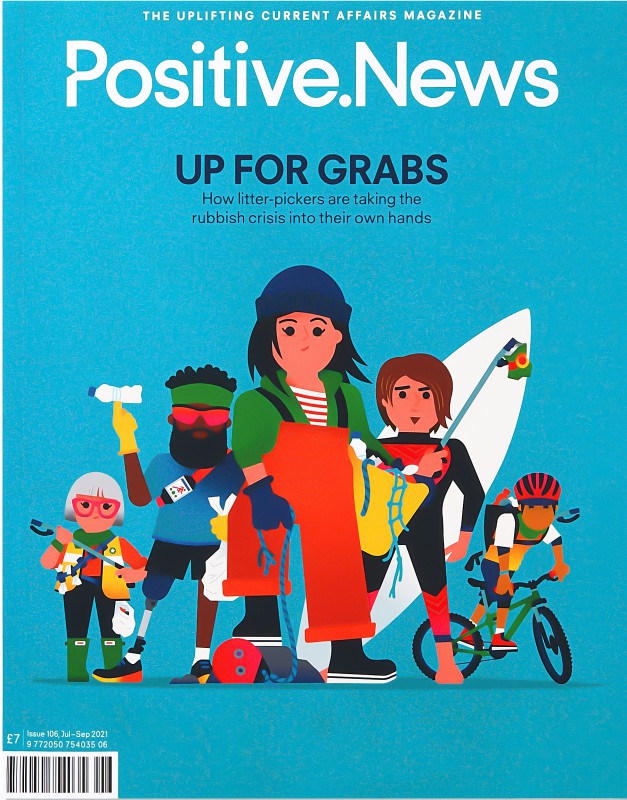
On social media sites like Facebook or Twitter it’s often hard to stay grounded. Anger and outrage get amplified much faster and more “successfully” than positive messages.
Even the former US president used negativity as his main lever to achieve popularity or rather notoriety.
Some businesses tried to mimic that questionable success by also provoking people and focusing on what’s wrong instead of providing solutions.
Is anger and outrage really the right context you want to see your business in? It’s also often the case in the green sector when the doom and gloom of the impending climate disaster gets used to sell all kinds of products.
You can’t scare people into action though. When you are fearful you play safe and freeze as I mentioned above already. You won’t act and buy.
You will rather try to hide and play dead. This is not rational, it’s the biology – the results of millions of years of survival instincts.
Another instinct is “to kill the messenger”. You as the messenger will be ignored then in the best case.
Solution: inspiring people. Instead of focusing on what’s wrong and dwelling on the negative just provide the solutions you inspire people to use them. Or at least try to provide both perspectives as I attempt here in this list post.
Also refrain from using hatebait to provoke anger and outrage. Such engagement may push your metrics quickly but it will hurt you in the long run. I usually unfollow such accounts. It’s the equivalent of reading a tabloid.
Ignoring Mobile Phones When Creating Content
Executives of global brands often still assume they are living in the print era. Whenever a new car gets presented you will always see a lot of horizontal images that would look good in magazines – ideally as centerfolds.
Yet on the Web the mobile experience is the prevailing one now. Thus only vertical images work well because people are indeed rarely flipping their screen.
I’ve seen these mistakes over and over and to share an image on Pinterest I often have to crop it myself. It’s not my job to promote your product for free, especially when it takes me actual work to do so. Thus I often do not share anything when there are no vertical images to share.
I have 3 millions of views per month on Pinterest, most of them with third party images I share, not my own ones. You lose out on them and of course I’m not the exception. Most people won’t notice you at all without vertical imagery.
Another issue is still long chunks of text that are barely readable on mobile phones. Often one sentence per line suffices. Two or three or the maximum.
Solution: adding white space, text formatting and providing vertical images from the start or at least crop the existing ones to focus on details.
Sometimes the square format people use on Instagram will even suffice.
No advanced Photoshop skills are needed. Free open source software like Pinta, an open source image editing tool, is sufficient. Canva, a popular Web-based app for graphic design, might also be helpful.
Publishing While Absent
Scheduling social media content is so common these days that people just publish while they are absent most of the time. Sometimes the scheduled content has been prepared weeks earlier. The result?
When outdated updates go live the links are sometimes broken or the messages already stale or obsolete altogether. You can’t even react to the feedback you get. The impression you offer of your account is this: you are a bot, a badly programmed one.
Accounts where social media managers do not even fix broken updates won’t be taken seriously for long.
Solution: being there to respond. The solution is simple. Only automate and schedule updates that are not critical. Before updates go live make sure to check them and test the links. Sometimes I’ve seen popular accounts push posts like “The Best X of 2019” even though it was already 2021.
When your updates go live make sure you are online. Don’t publish on weekends or at night unless you can react fast enough when mistakes happen.
Always engage with those who respond to your updates, not just in case they point out errors. Amplify your messages by starting or joining conversation in a timely manner, not days later.
Repeating Repeating Repeating
Many marketers advise you to repeat your message in order to reach larger audiences. Many marketers advise you to repeat your message in order to reach larger audiences.
Many marketers advise you to repeat your message in order to reach larger audiences.
While this can indeed be helpful you are also likely to ostracize existing audiences. People who notice the same message over and over are likely to ignore your updates in future.
Solution: varying. When you repeat something at least vary the wording a bit. When you share the same link make sure the angle is a bit different each time.
Also reshare updates from others who share your content instead of just sharing the same update of yours more than once.
Automating Social Interactions
One thing that is even worse than automating social media publishing and being absent while updates go live is to add insult to injury by automating social interactions too.
For a year or two there was a huge chatbot hype.
Chatbots were hailed as the next big thing to grow your revenue and cut costs while helping your audiences 24/7. Yet to this day I haven’t seen one useful chatbot. The opposite is the case.
Whenever I interacted with chatbots I was highly frustrated and usually wasted my time. The last step of the chatbot “conversation” was just “please write an email”. In essence I had to jump through hoops until the chatbot told me “sorry, I can’t help you” or simply started running loops.
I get it. You can’t be online all day and night. I don’t want it either. It’s OK to respond within a day or 24h.
Sure, it’s better to answer questions or fix things before people get angry but unless you have a whole customer support team the social media manager can’t do this alone. Just ensure people get help on social media within an acceptable time frame.
Solution: responding regularly. Don’t check your “social media phone” just once a week but don’t always switch the mailbox on as if you were absent in general. Just like in real life a response during business hours within a day is fine.
Not Measuring Social Media Properly

When I take over a social media account to manage it one of the first things I do is setting up an account with Databox. Databox is a dashboard (or “databoard”) tool that takes freely available data, think
- Facebook Insights
- Twitter Analytics
- Google Analytics
and puts it in front of your eyes in a readable and actionable format. No more hunting for actual referrer stats by clicking several menus on GA. No more silo type of analytics where it’s hard to find out whether popularity on a network does correspond to actual traffic on your own site.
The last company I worked for did not allow that. They had their legacy solution where it was hard to see any impact from social media at all.
In case to implement a free Databox dashboard (you get up to three data sources for free) I would have to talk the legal department first and only after setting up the legacy tool to prove that it does not suffice.
As I was on a limited contract and it already took months just to set up a simple blog I gave up and did not fight another long term battle, especially as I wasn’t actually the social media manager there.
Solution: using Databox. The Databox tool is no big deal. It’s easy to set up and prove its value with the three free data sources and from then on companies can add more of them as the investment is already justified upfront.
When you don’t properly measure and compare engagement, traffic and sales stats across social media and your site you can’t actually see the real impact your or social media activity in general has.
Focusing on Last Click Attribution
What happens when you don’t use a proper tool to measure social media activity like Databox. You end up looking at meaningless metrics like impressions. What you also will suffer from is the so called “last click attribution”.
When you believe Google Analytics most conversions and sales come from search.
That is of course very convenient for Google and their search ads based business model. Isn’t it?
How come people search for your product though? How did they even know it exists? Well, in many if not most cases they have seen it on social media.
They may have read your content on the company blog. They may have downloaded an ebook or taken part in a webinar. At the end of the day there usually were several so-called “touch points”.
Unless you buy TV or magazine ads based on which people search for you, most conversions have been assisted by social media and content in one way or many others. Measuring only the last click from search to your site is a widespread fallacy.
This way you assign the most value to end of the race instead to the start. Without a proper start even a sprint won’t allow you to cross the finish line.
Solution: considering the entire customer journey. The actual customer journey goes something like this:
- an influencer shows off your product on social media.
- Another source shares a review of your product.
- You create a video or blog post that gets shared.
- You provide use cases, studies or other long form content proving the value of your offering.
- Finally buyer is convinced and searches for exact product on Google, compares prices and buys it.
Ignoring the Funnel

Those businesses that focus on impressions, meager social media traffic or last click attribution to search ignore the actual sales funnel most of the time.
They invest heavily into SEO or worse search ads and wait until they get searched for even when people do not yet know that such a company or product exists. You have to
- create
- curate
- share
content along the whole funnel as mentions in the “last click attribution” point above. The top of the funnel content is often quite different from the bottom of the funnel one. While the first tries to get attention the latter attempts to finally convert.
Solution: guiding people along the sales funnel. Don’t just focus on the first or last step. Make sure the customer journey begins at all or rather leads to your online store instead of the competition.
When people don’t know you they won’t find you. Even when they find you they won’t buy from no-names they do not yet trust. Eran trust by providing content, engagement and assistance along the whole way.
How to Practice Social Media Management Properly? Hire Me!
Well, hire a social media manager! Hint: I offer social media management among other services.
This does not have to be a full time role. I have had clients over the years where half an hour to an hour per day was sufficient.
Just make sure there is someone specifically taking care of communications on social media.
Let that person use a name so that users recognize her/him. Don’t let marketing, customer service or random company execs do social media anonymously.
P.S.:
Just in case you wondered why I mixed social media and blogging advice in the list above:
Yes, blogging is indeed part of social media.
That’s official! I didn’t say so first. Now that we talked about social media by other names: online media were social even earlier btw. Before the term social media went mainstream there were already
- mailing lists
- Web rings
- forums
Yeah, mailing lists were social! They even allowed to respond to everybody on the list!
Today when many business messages come with a no-reply email address so that you can’t even respond to the sender. Or rather you can, but they will simply ignore it. How rude!

I think one of the biggest mistakes companies make is not having a clear strategy in place for their social media channels. It’s important to know what your goals are and how you plan to achieve them.
Exactly I agree with you, I am alex a content writer at CPP Boxes, I have noticed that we are making same mistakes.